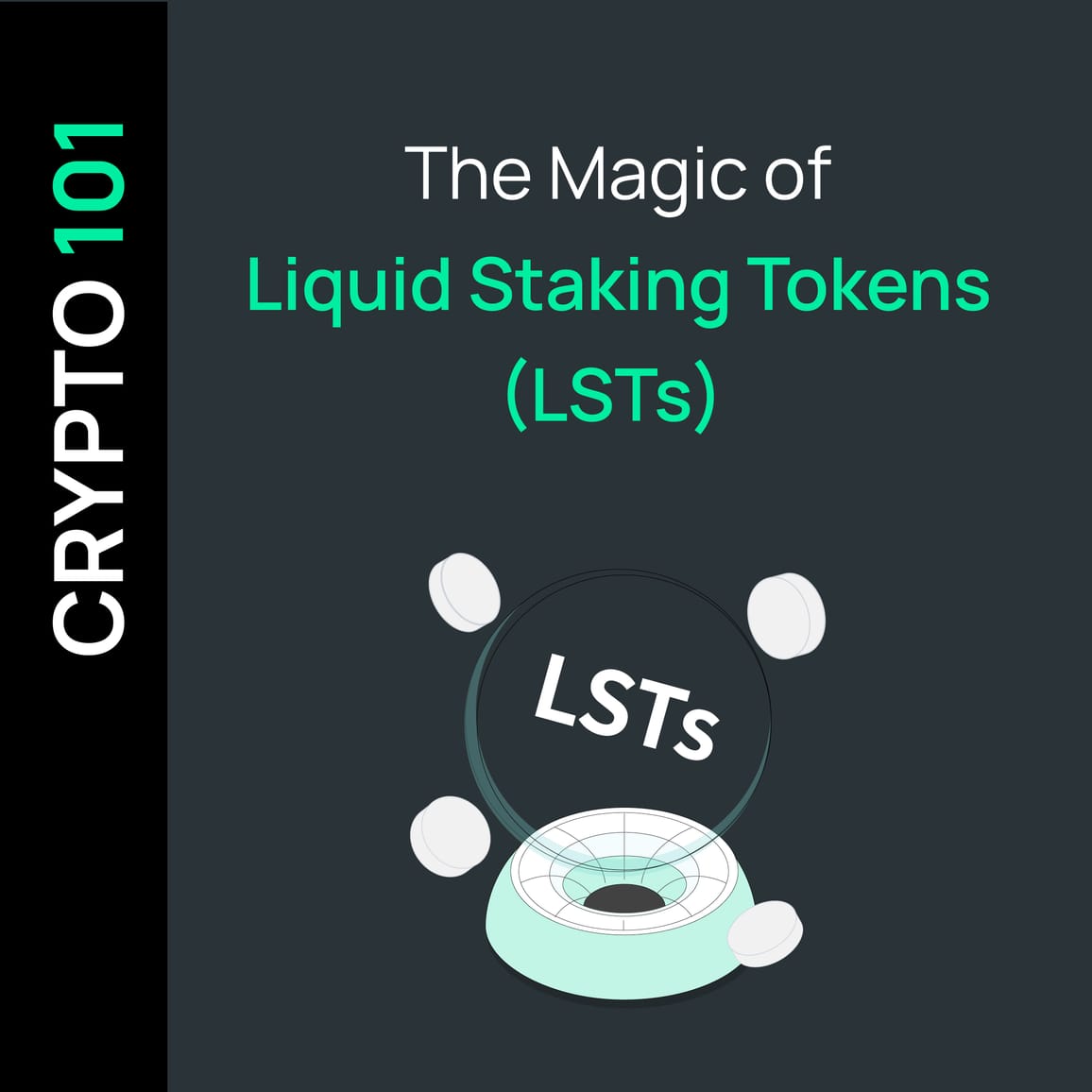The Magic of Liquid Staking Tokens (LSTs)

In the world of decentralized finance (DeFi), staking has become pretty important. Staking usually means locking up some tokens to help a network run smoothly, like validating transactions or keeping things fair with Proof-of-Stake. But there's been a problem: once you stake your tokens, you can't really use them for anything else. That's where Liquid Staking Tokens (LST) come in.
Liquid staking tokens are representations of staked assets. So, when you stake your assets, you get an equivalent amount of LSTs. These tokens can be traded, sold, or used in different DeFi platforms, which means you can still use your assets while they're staked.
Why People Like LSTs
Liquid Staking Tokens are popular for a few reasons. One big one is that they make it easier to move around in the DeFi world because they keep your assets liquid. Also, they work across different DeFi platforms, which helps everything work together smoothly. Plus, holding LSTs can help you earn more rewards through things like yield farming. And they can also be used as collateral for borrowing or lending, giving you more options with your money.
How Liquid Staking Tokens Work
Let's look at a popular example, LsETH, which is for staking Ethereum. When you put ETH into the Liquid Collective system, you get LSETH tokens in return. These tokens represent your staked ETH and any rewards you earn. The exchange rate between LsETH and ETH can change over time as you earn more rewards. You can use LsETH just like regular tokens: trade them, store them, or use them in different DeFi apps.
Basically, staking ETH gets you LsETH, which you can use for other DeFi apps while still earning staking rewards.
Different Ways to Use LSTs
Liquid Staking Tokens can be used in a few ways in the digital asset world. You can hold onto them to earn network rewards, swap them for other tokens to mix up your portfolio, or use them as collateral for things like trading or borrowing.
Top Liquid Staking Tokens in DeFi
Each proof of stake blockchain will have its own ecosystem of liquid staking tokens, and utility across native dApps.
But across the whole DeFi landscape, some of the most used Liquid staking tokens include:
- Lido Staked ETH (STETH)
- Mantle Staked ETH (METH)
- Jito Staked SOL (JITOSOL)
- Marinade Staked SOL (MSOL)
- Liquid Staked ETH (LSETH)
- Haedal Staked SUI (HASUI)
- Rocket Pool ETH (RETH)
- ETHER.FI Staked ETH (EETH)
These tokens show how important it is to keep staked assets liquid, making it easier to use them across different DeFi platforms and creating more value in the process.
The next modular DeFi building block: Restaking
Restaking has emerged as a significant sector within DeFi and is poised to become an integral part of the network's infrastructure. Essentially, restaking involves using already staked assets to enhance security for other networks or protocols.
However, as the adoption of Liquid Restaking Tokens (LRT) wrappers around the underlying protocol increases, hidden risks may arise. These risks could stem from nontransparent staking strategies or temporary dislocations from the underlying assets.
In times of increasing complexity, it's crucial not to become complacent. Users should remain vigilant and thoroughly assess the risks associated with restaking and the adoption of LRT wrappers to safeguard their investments in the DeFi space.

